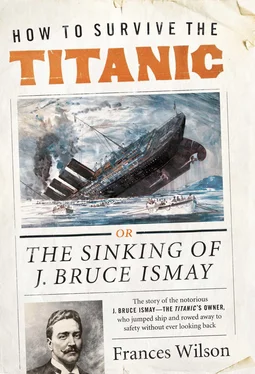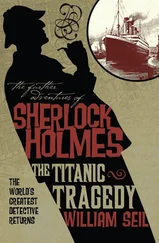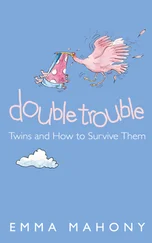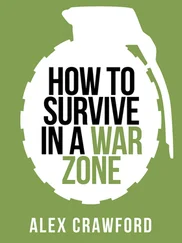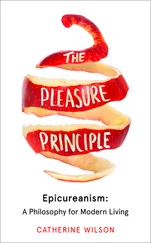G. K. Chesterton, H. G. Wells, George Bernard Shaw and Sir Arthur Conan Doyle produced newspaper copy when they were asked to do so, but there is no mention of the subject in their private correspondence, and nor did it bleed into their subsequent work. Virginia Woolf, who attended the British Board of Trade inquiry in London, said in a letter to her friend Katherine Cox that ‘what I should really like to do now, but must refrain, is a full account of the wreck of the Titanic. Do you know it’s a fact that ships don’t sink at that depth, but remain poised half-way down, and become perfectly flat, so that Mrs Stead is now like a pancake, and her eyes like copper coins.’ This image is Woolf’s only observation on the wreck: instead of writing a full account of the Titanic she wrote The Voyage Out, about another journey from which there was no return.
It was the general public who discovered a bottomless capacity for reading and writing about the Titanic. Those who had never before penned a line were inspired to produce poems by the yard, some of which were collected in special anthologies; newspapers were inexhaustible in their coverage of the story (the New York Times allotted seventy-five pages to the Titanic in the first week alone); survivors’ accounts were rushed out by the press, and popular journalists put together instant ‘biographies’ of the ship. The Titanic brought out the writer in everyone except those who wrote for a living, most of whom, like Ismay, were apparently struck dumb by the event. The novelists, poets and playwrights of the Edwardian age simply couldn’t find the words and what they did write served as a cover for talking about something else, like commerce, chance or class. ‘World’s Largest Metaphor Hits Iceberg’, runs a spoof headline in The Onions book, Our Dumb Century (1999). Even Hardy’s memorial poem, ‘The Convergence of the Twain’, written for the souvenir programme of the Covent Garden benefit matinee for the families of the dead on 4 May, can be read as a poem not about the Titanic but about his doomed marriage to Emma Gifford. 1‘Trust a boat on the high seas,’ as Conrad puts it in Lord Jim, ‘to bring out the Irrational that lurks at the bottom of every thought, sentiment, sensation, emotion.’ Conrad’s insight could serve as the epigraph for the story of J. Bruce Ismay.
Documents from the Ismay family archive at the National Maritime Museum in Greenwich are identified by TRNISM, and those from the Lord MacQuitty Collection at the National Maritime Museum by LMQ. The sources for all the quotations from the US Senate and British Board of Trade inquiries into the wreck of the Titanic can be found online at www.titanicinquiry.org, and are referred to below as Inquiry Proceedings.
1A full account of the various versions of the loading of Collapsible C, ‘Ismay’s Escape: Did he jump or was he pushed?’, can be found at: www.paullee.com/titanic/ismaysescape.html
2John B. Thayer, The Sinking of the SS Titanic, April 14–15, 1912 (Philadelphia, 1940), p. 20.
3LMQ/7/2/21.
4Quoted in Logan Marshall, The Sinking of the Titanic and Great Sea Disasters (Charlford, 2008), p. 40.
5Thayer, pp. 18 and 20.
6Colonel Archibald Gracie, ‘The Truth About the Titanic, reprinted in The Story of the Titanic As Told by Its Survivors, Lawrence Beesley, Archibald Grade, Commander Lightoller, Harold Bride, edited by Jack Winocour (Dover, 1960), p. 259.
7Charlotte Collyer, The Semi-Monthly Magazine, 26 May 1912.
8Quoted in John Wilson Foster, ed., Titanic (Penguin, 1999), p. 83.
9Violet Jessop, Titanic Survivor (Sutton Books, 2007), pp. 152–3.
10Lawrence Beesley, ‘The Loss of the SS Titanic , in Winocour, ed., The Story of the Titanic As Told by Its Survivors, p. 41.
11Gracie, ‘The Truth About the Titanic , in ibid., p. 150.
12Commander Lightoller, ’Titanic, in ibid., p. 278.
13Francois Rabelais, Gargantua and Pantagruel, translated by M. A. Screech (Penguin, 2006), pp. 829–30.
14LMQ/7/2/19.
15LMQ/7/3/B.
16 Daily Telegraph, 22 April 1912.
17LMQ/7/1/15.
Chapter 2: Luckless Yamsi
1US Senate Inquiry Proceedings, testimony by Captain Rostron.
2Marconigram sent from the Olympic to the Carpathia.
3 The Times, 20 April 1912.
4 Atlantic City Daily Press, 5 May 1912.
5US Senate Inquiry proceedings.
6 Daily Telegraph, 21 April 1912.
7TRNISM/3/1.
8John B. Thayer, Evening Bulletin, Thursday 14 April 1932.
9Lawrence Beesley, ‘The Loss of the SS Titanic, p. 19.
10Ibid., p. 30.
11Ibid., p. 9.
12Ibid., p. 44.
13Ibid., p. 43.
14Ibid., p. 42.
15Joseph Conrad, Lord Jim: A Tale, edited with an introduction by Alan H. Simmons, with Notes and Glossary by J. H. Stape (Penguin Classic, 2007), p. 19. All subsequent quotations from Lord Jim come from this edition.
16Beesley, ‘The Loss of the SS Titanic , p. 32.
17 Lord Jim, p. 17.
18Lightoller, ‘ Titanic’, p. 296.
19Unsigned manuscript dated August 1926. I am grateful to Angus Cheape for drawing my attention to this document.
20US Senate Inquiry Proceedings, testimony by Lightoller, 19 April 1912.
21Thayer, The Sinking of the SS Titanic, p. 30.
22Lightoller, ’Titanic’, p. 279.
23British Inquiry Proceedings, testimony by Alexander Carlisle, Question 2i284.
24 Washington Times, 17 April 1912.
25Lightoller, ’Titanic’, p. 275.
26 Washington Times, 17 April 1912.
27Ibid.
28Ibid.
29Speech by Senator William Alden Smith, US Senate Inquiry Report, 28 May 1912.
30LMQ/7/2/37.
31The bogus messages may have been the result of an eavesdropping amateur wireless operator picking up Marconigrams on two different subjects and combining them. ‘Is the Titanic safe?’ and ’Asian 300 miles west of Titanic and towing oil tanker to Halifax’ became ‘All Titanic passengers safe — towing to Halifax’.
32US Senate Inquiry Proceedings.
33I bid.
34Wyn Craig Wade, The Titanic: End of a Dream (Weidenfeld and Nicholson, 1980), p. 97.
35LMQ/7/i/i5.
36LMQ/7/2/22.
37Beesley, ‘The Loss of the SS Titanic, p. 58.
38Ibid., pp. 8i–2.
39Ibid., p. 82.
40US Senate Inquiry Report, 28 May 1912.
41Account by Edith Russell, LMQ/7/2/i9.
1TRNISM/7/4.
2Bram Stoker, ‘The World’s Greatest Shipbuilding Yard’, The World’s Work, Vol IX, March 1907, p. 360.
3Jules Verne, A Floating City (Routledge, 1876), p. 12.
4R. A. Fletcher, Travelling Palaces: Luxury in Passenger Steamships (Pitman and Sons, 1913), p. 30.
5Letter from James Ismay to his father, TRNISM/10/1.
6TRNISM/4/1.
7TRNISM/10/1.
8Dudley Parker, The Man of Principle: A View of John Galsworthy (Heinemann, 1963), p. 36.
9Catherine Dupre, John Galsworthy: A Biography (Collins, 1976), p. 43.
10John Eddison, A History of Elstree School (1979), p. 49.
11Quoted in Mark Girouard, The Return to Camelot: Chivalry and the English Gentleman (Yale University Press, 1981), p. 13.
12John Galsworthy, Another Sheaf (New York, 1919), p. 92.
Читать дальше
